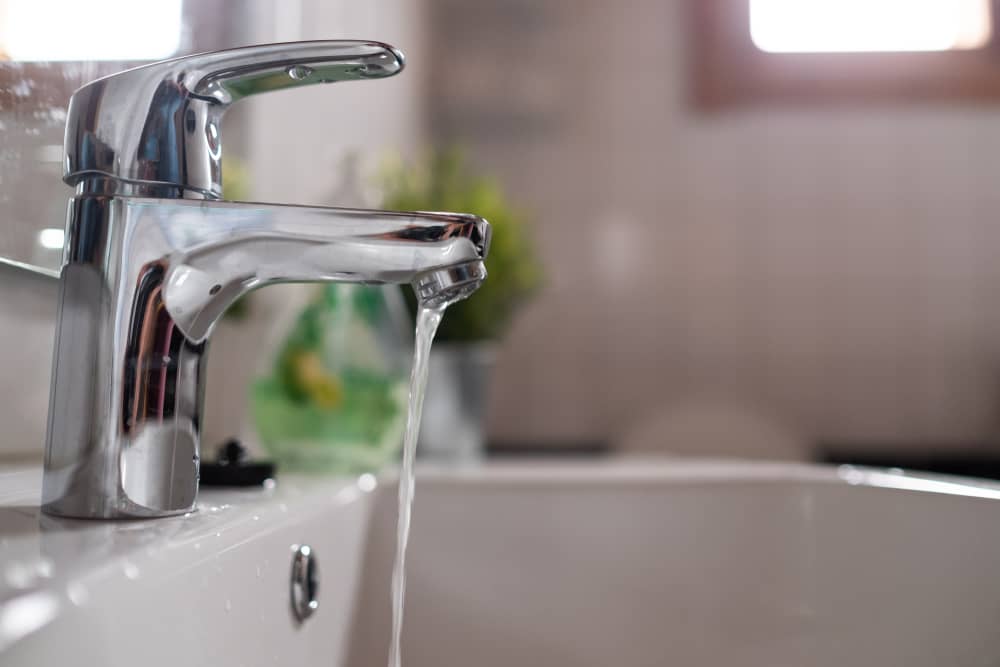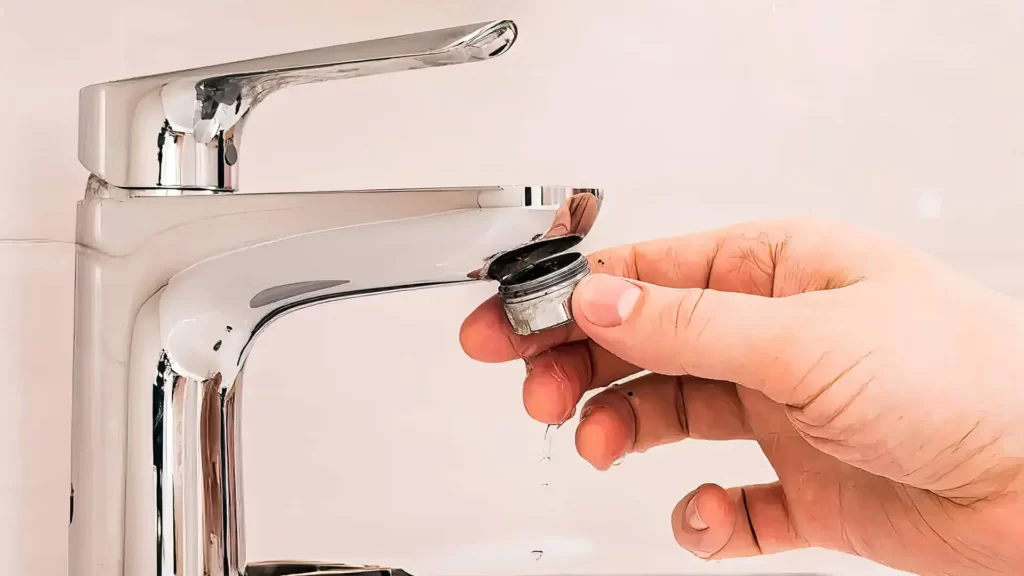Last Updated on August 6, 2023 By Emma W. Thomas
If water runs slow from taps, try these steps:
- 1) Check if all taps are affected
- 2) Clean faucet aerators
- 3) Inspect the water supply valve
- 4) Look for leaks or blockages
- 5) Contact a plumber if the issue persists for professional assistance
What To Do When Your Water Is Running Slow From The Taps
Are you tired of waiting for ages to fill up a glass of water because the water is running at a snail’s pace from your taps? Don’t fret! We know how frustrating it can be. Slow water flow can be caused by various reasons, but fortunately, many of them can be fixed easily. Here are some steps you can take to get that steady flow of water back in no time:
- Check the aerator:
- Over time, aerators on faucets can get clogged with mineral deposits, dirt, or debris. Unscrew the aerator, which is typically located at the tip of the faucet, and inspect it for any visible blockages. Clean it thoroughly or replace it if needed.
- Clear out the pipes:
- Sediment buildup or mineral deposits in the pipes can restrict water flow. To clear them out, turn off the water supply and open all the faucets to drain any remaining water. Then, close all the faucets and slowly turn the water supply back on, allowing any trapped debris to flush out.
- Inspect the shut-off valve:
- The shut-off valve is usually located near the water meter. Ensure that it is fully open to allow maximum water flow. If it’s partially closed, simply open it until it is fully activated.
- Check the pressure regulator:
- If you have low water pressure throughout your house, the pressure regulator may be the culprit. Consult your plumber to inspect and adjust the pressure regulator if necessary.
- Look for leaks:
- Leaks in the plumbing system can decrease water pressure. Inspect all visible pipes, faucets, and connections for any signs of leakage. Fix any leaks promptly to improve water flow.
- Replace old plumbing pipes:
- Aging plumbing pipes can become corroded or develop blockages. If you have older pipes, consider having them replaced with newer ones to improve water flow and minimize future issues.
- Call a professional plumber:
- If none of the above steps resolve the slow water flow issue, it’s time to seek assistance from a professional plumber. They have the expertise and tools to diagnose and fix any complex or underlying problems in your plumbing system.
Causes Of Low Water Pressure

There are various reasons why your water pressure could be low, thus causing slow running. If you know what causes this problem, you could solve the issues and save some money. The problems may include;
Shut-Off Valves
If one or more valves are not completely open, this could cause low water pressure. Try to look for closed valves that are usually found under the sinks and turn the knob clockwise. If the incompletely open valves were the cause of the problem, your water would run faster.
Blocked Pipes Or Aerator
If, after opening the valves completely, you still experience low water pressure, then you need to find out if there is a clog. The cap on the faucet (aerator) where water comes out could sometimes be clogged by sediments making the water flow slow. You can remove the aerator and unclog it by cleaning thoroughly with a soft brush.
If there are a lot of sediments clogging the aerator, you can soak it in vinegar for a few minutes before cleaning. If the residues were the cause of low pressure, then the flow will improve significantly. However, if after cleaning the cap you find no improvement, check the pipes for any blockages.
Sometimes mineral deposits may build up in the pipes causing slow water flow. An accumulation of sediments in the piping may even cause the pipes to burst. You need to consult a professional to solve the issue before it gets out of hand. Ensure that your lines are also adequately maintained for optimum performance.
Leakages
Leaking pipes also cause low water pressure and hence slow running. You can know if there is a leakage by observing the water meter with all water taps turned off. After turning off the water, wait for a few hours and check if the meter reading has increased. If it has, then it means the water is leaking, and it is high time you call a plumber.
Your Water Heater
If your cold water is running fine, but you realize that the hot water pressure is low, the issue could be the heater. You can look at the valves on the water heater and ensure that you open them. This way, the hot water flow will improve. However, if the pressure remains low after opening the valves, check the water lines that lead into the water heater. These lines may be blocked, have leaks, or the heater may be faulty. Call a professional to check where the issue is.
Neighbors Using Water
When your neighbors are using water at the same time, it could also lead to low pressure. If your schedules for using water coincide with your neighbors, then it may affect the water pressure. For example, if you shower at the same time as the neighbors, your water will run slow.
Your municipal water supply could also have issues that lead to low water pressure. If this is the issue, you can call them to rectify the problem.
What Causes Slow Water Running From A Bathroom Faucet?
If your bathroom faucet has a low water pressure and you are wondering what to do with it, relax since the problem is solvable. To repair a faulty bathroom faucet, you need to identify why there is a slow water stream. The following could be the issues;
Faucet Aerator With Low-Flow
Some bathroom faucets have low-flow aerators that are aimed at saving the consumption of water. A small disc is placed inside the aerator to control the water flow. The aerator is usually fixed onto the end of the faucet spout.
Since the water saver cannot be removed, you can replace your faucet with a different type if it is the cause of low water pressure.
Clogged Aerator Screen
The aerator has a mesh filter screen, which sometimes gets clogged by sand particles and mineral deposits. If you have a slow water flow from your faucet, you can remove the aerator and flush the sediments from the tap.
You will also need to scrape the debris from the aerator and rinse it clean. Carefully return the aerator after cleaning. Be careful when removing the gadget not to spoil it. You can use a pair of pliers and cover it with a piece of cloth to protect it from tool marks.
Shut-Off Valves
If the shut-off valves are not fully open, you may experience slow water running. Ensure that you check the valves, which are usually located below the sink. Ensure that the valve handles are turned counterclockwise to open. If there are ball valves, ensure that each handle is rotated until it is parallel with the pipes for it to be fully opened.
Supply Tubes To The Faucet
The supply lines found under the sink connect the faucet to the shut-off valves. These tubes sometimes get crushed hence slowing the flow of water to the faucet. To check if they are working correctly, close the valves and disconnect the tap’s supply tubes. Place the end of each line into a bucket at different times and turn on each valve. If the water flows strongly, the pipes are clear, and the problem is in the faucet.
How To Fix Low Water Pressure

When the water pressure in your house is low, there could be various reasons for this. If you know the cause of the problem, you can fix it and get the water flow back to normal. The following tips will help solve the problem;
Water Leaking
Water leaks cause low pressure. Check if your water is leaking from the plumbing pipes through a hole or crack before reaching your fixture. If this is the case, it will affect the water pressure in the showerhead or faucet. You can call in a professional to rectify the issue and get back the pressure to normal.
Debris Build-Up
If there is debris or mineral buildup in one or more pipes in your home, it will lead to low water pressure. The waste accumulates in the fixtures and pipes, causing blockages that lead to slow water flow.
To rectify the issue, you can fill a plastic bag with white vinegar and hang it around the faucet or showerhead using a rubber band. Allow the tap to soak for a few hours in the vinegar to loosen the debris.
Shut-Off Valves
If the low water pressure is in the entire house, the problem could be coming from the main meter’s shut-off valves. Check the valves and ensure that they are entirely open. You can also call in a plumber to help adjust the pressure-reducing valve, if any so that you get the right pressure.
Conclusion
Slow-running water in your home could be frustrating as you will not accomplish the tasks you want at the right time. It is also disappointing when you want to shower, but the water cannot run as you want it.
There are different reasons why this could be happening, such as problems with shut-off valves and mineral deposit build-up in pipes. If your water is leaking from the pipes or your neighbors and you are using water simultaneously, you will experience a problem. However, you can rectify the issues following the guidelines in this guide and get your water flow as you desire.
References:
https://www.wikihow.com/Troubleshoot-Low-Water-Pressure
https://www.networx.com/article/slow-water-flow-what-to-do
Emma is a graduate of Domestic Science or Family and Consumer Sciences (Home Economics) from the University of Wisconsin. She has 7 years of experience Working with the strategic section of BestBuy and now writing full-time for Homeeon.
From Managing the Home, Interiors, Cleaning, and Exteriors to Gardening and everything about Making A Home Liveable – is her passion and this Homeeon is the result of this.
Emma loves decorating her home with the best stuff found online. She cares about quality over anything and writes reviews about them here in Homeeon. Get in touch with her over Pinterest.
Keep reading her blogs.

